#so some lore background in the non magic world there’s a very very large country that controls the entire continent they live on
Explore tagged Tumblr posts
Text
PBTA Spelljammer GLOG Thing?
Recently, my father dug up his old Traveller and MegaTraveller books for me, and after having a lot of fun reading through them, I can definitively say I don’t ever want to GM the system. But it got me in a space-gaming mood and my mind turned to two things. First, the Uncharted Worlds game I was once a player in, which seems to have borrowed a lot of the good aspects of Traveller and put them into a PBTA system, which I love very much. Second, the AD&D setting Spelljammer which is an amazing science-fantasy fever dream that I’ve unfortunately never gotten to experience firsthand. Naturally, I decided I’d make an RPG. And, ever since I discovered it, GLOG has basically consumed a large part of my mindspace whenever I think about RPGs.
Now it’s about a month later, and I have a lot written, but even more still to write. My biggest issue is getting my thoughts organized. I’m always a lot neater when I know other people are going to see my work. So, in a hope to make things more coherent for myself, I’m going to let you in on what I have to far.
What I like about Spelljammer
Science fiction minus the science
Practically any science fiction trope you can think of fits into the setting, but when it comes to the actual science, it’s this weird-ass mix of a classical Greek and medieval alchemist understanding of the cosmos.
You don’t have to worry about players “um, actually”-ing you about what happens in the vacuum of space, because it’s actually not even a vacuum!
Magic = FTL
Despite the previous point, its science is actually still relatively “hard” when it comes to internal consistency and logical consequences to its different laws of reality than our own. The magic, on the other hand, is magic. My headcanon is that the speed of light imposes a hard limit, but magic is the one thing able to ignore it.
While people could theoretically pull off a no-magic spacecraft launch (if they had a few thousand more years of technological development), for the most part, if something is in space, it’s probably because a wizard decided they wanted it to be in space.
Weird-ass spaceships
Since a spaceship is “anything you can put a spelljamming throne in,” you get a delightful mix of regular boats, classic pulp sci-fi or space opera spaceships, weird organic tentacled things, and whatever else strikes your fancy.
What if a dragon died and all the kobolds that worshipped it somehow got enough spell slots to just pilot its corpse into space and start fucking shit up?
Sadly, Spelljammer doesn’t offer a lot of customization, instead just relying on a wide catalogue of weird ships used by different aliens.
Wizards
What I like about PBTA
Adaptable to basically any setting
There is a great wealth of hacks I can draw from
These two points go hand in hand. I haven’t, however, been able to find a specifically spelljammer-inspired PBTA hack, so that’s why I’m doing this.
The PBTA games I’ve read through in creating this (so far) are Uncharted Worlds, Dungeon World, and the original Apocalypse World.
Encourages little preparation
My biggest challenge in running a game that’s interstellar in scope is my instinct to pre-prepare everything, which is already problem if I think I need to make an entire country, let alone an entire planet. But now we’re talking not only a planet but every planet.
While you can do worldbuilding as the GM for a PBTA game, you can also not do any, and let the players do all the work for you upon character creation. Dungeon World is especially good at this.
It’s fun
I’ve enjoyed every PBTA game I’ve been a player or a GM for, no exceptions (so far).
It’s extremely easy to teach people
Most of my friends are not as into learning new systems as I am. But most of them have already played at least one PBTA system, and if they haven’t, it wouldn’t be as much of a hassle as say, AD&D or Traveller.
What I like about GLOG
The four-template class blueprint
If PBTA character sheets are streamlined, I don’t even know what I’d call GLOG character sheets.
I don’t know if I’d shave my classes down quite as much, but I’m definitely taking notes from GLOG’s designs.
GLOG spellcasting
This is one of the things I like most about GLOG.
Spell dice to power FTL? Maybe 1 die per 30 light years or whatever, and the sum determines how fast the trip can be made? Doubles and triples can be malfunctions or space pirate attacks or something.
A shit ton of classes
I think I’d like to limit it to 10 or so classes, but I’m definitely going to get inspiration from some of the weirder GLOG classes along with the classes fighters/wizards/rogues.
An emphasis on interesting problem-solving
I think this is more just good game design than GLOG itself.
Encourages taking a weirder spin on fantasy lore that’s often taken for granted
Again, this seems like it’s just good worldbuilding, but a lot of GLOGgish writings do this, and I’d like to follow in their footsteps.
What I like (and dislike) about Traveller
I don’t like how obtuse it is
Reading the book sort of overwhelms me. It’s like they didn’t even try to make it accessible. It’s just endless black text on a white background, tables and diagrams strewn about haphazardly, and no art, not even just at the beginnings and ends of sections. The cover is a black void to symbolize the state of my mind after reading three pages.
When it comes to spaceships, I like a lot of crunch and granularity in their design
Something I found myself wishing for when playing Uncharted Worlds was a more involved ship design process. While they did clearly take notes from Traveller, it’s nothing like the original.
I don’t know what it is about spaceships. Characters I like simple and streamlined, but I guess reading through power plant matrices and choosing software and balancing it all on a budget gets me into the headspace I actually believe a spaceship creator would be in, whereas I don’t think the creation of a person usually involves that sort of design process.
I'm neutral on the crunch for everything else, but I think it's at odds with PBTA sensibilities
Plus, as I sort of mentioned in the PBTA section, I want my mostly 5e-playing friends to be willing to test this with me.
I like the psionics
I really like psionics, and I think Traveller properly captures the feel that I like for them.
However, I’m not a fan of “anyone can test their psionic abilities and then roll to maybe get powers.” I’m going to have a psionic class, which a character can start in if they want to have psionic powers, or they can multiclass into later if they want to discover their psionic potential later on. If they don’t want their character to have latent potential, they can just never take any levels in the class.
I dislike the highly-defined setting
I know it’s supposed to be adaptable to most sci-fi settings, but the books reference their own universe and history so much that it doesn’t really feel that way.
How do I synthesize this all into one game?
Setting-wise, I’m mostly drawing from Spelljammer, as well as Star Wars, Numenera, and my own imagination. I don’t want to define many specific planets or empires or sectors or whatever since I prefer most of the worldbuilding work be done by players during character creation. Also, if you know of any very low-science space fantasy fiction that I should read, please send it my way.
I do have very specific ideas about how I want spaceships and space travel to work, which I think need their own post later. You might get a pretty good sense of what I’m going for from the Spelljammer and Traveller sections, though. My plan is to take advantage of something like Traveller’s very granular and in-depth ship creation to let players make their own completely batshit Spelljammer-style spaceships. I think a ship needs its own character sheet.
I’m doing the PBTA thing where each class has a character sheet. I haven’t decided whether I’m doing the standard 6 stats or making up some weird ones. The former is definitely easier to sell to people but I think the latter is cooler. Also, since you need a spellcasting class to have FTL what do you do if nobody picks one? I don’t want to get in a situation where I have to tell them “one of you needs to switch classes,” that just feels bad and could create animosity. A solution I’m slightly leaning towards is having only one of each character sheet, then making sure there’s always one fewer non-spellcasting class option than there are players, so by pure mathematics someone will end up able to power the ship, and I don’t need to force anyone to change on my own. The issue there is then I can’t have more than 3-5 non-spellcasting class options depending on party size, and I’d prefer a larger and more varied class pool. Another option would be to have magic hirelings available, but I want spellcasters with the ability to do FTL to feel like these big, weird, and powerful personalities, so having them just available as hirelings sort of it cheapens that in my opinion. Maybe it’s not actually important that the party always have access to their own interstellar travel? I could see the PCs being like a bunch of interstellar hitchhikers. Very Douglas Adams.
That’s just about everything that I don’t think needs a separate post. I hope you enjoyed it, and if you have any thoughts about this potential horrible chimera of a system I’d love to hear them! You can reach me here through Tumblr or at Robot_Face#7919 on the OSR discord server.
7 notes
·
View notes
Text
qb anime of the year list 2018
Anime of the Year 2018 - the year of girls going to aquariums together
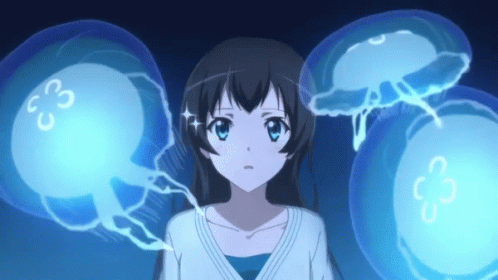
I’ve seen at least one person who claimed that 2018 was the best year for anime in recent memory and I’m inclined to agree. A large majority of my top ten list is shows that I would consider perfect and even shows that blew away what I thought was possible in the medium. It was a revolutionary year and makes a strong argument that anime wasn’t a mistake after all. - qb
#1
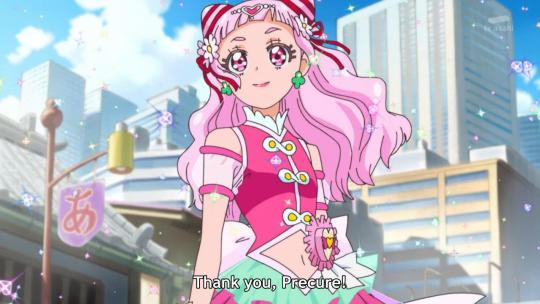
Hugtto! Precure blew away my expectations every week for close to a year. I don’t exactly know what to say about it here, since this isn’t the last time I’ll talk about it for sure. It doesn’t even end in 2018, but it was such a huge part of my 2018 in anime that it would be inaccurate to not include it. The only way I can think to explain Hugtto! Precure is to talk about the Netflix She-ra reboot. She-ra’s a pretty basic modern Dreamworks cartoon, with some interesting ideas thrown in and likable characters, but mostly held back by what they could realistically allot for production. Because of this limitation, She-ra goes hard on a single perfect episode (if you’ve seen it, you know which one) that stands out in a big way and shows the full potential of what they set out to make. Usually, Precure is lucky to get a handful of these stand-out episodes in a season, and most of the time just gets by, due to being an annual series that can never, ever take a break. Normally, the first few episodes of a Precure season can be counted on to be strong, but the realities of anime production being hella tough inevitably catch up.
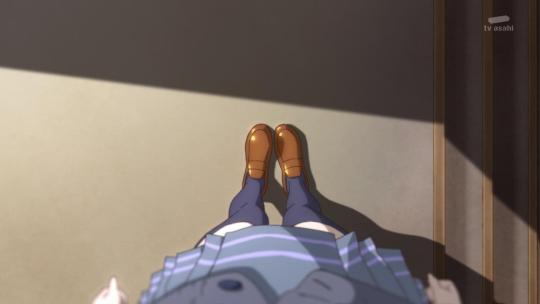
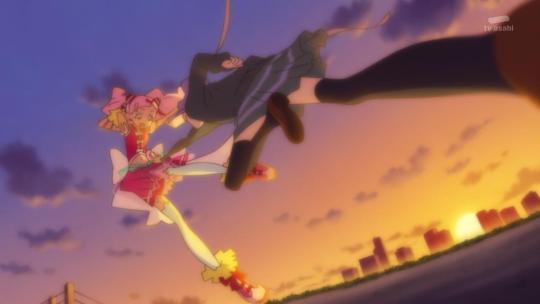
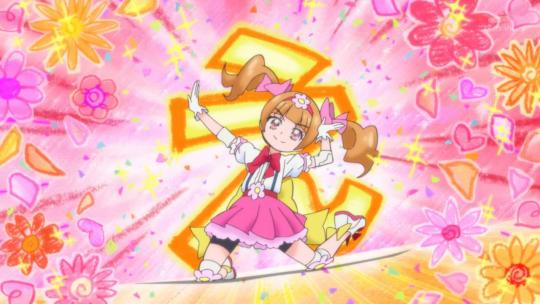
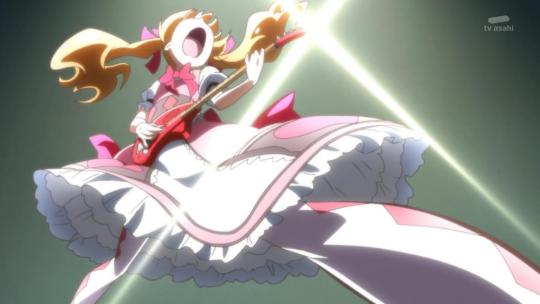
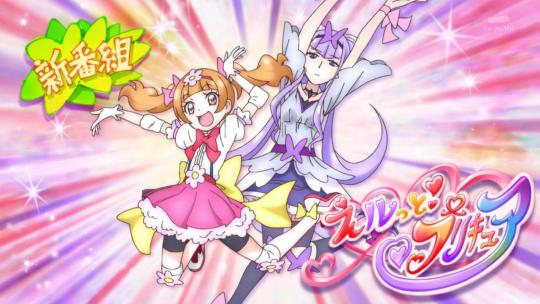
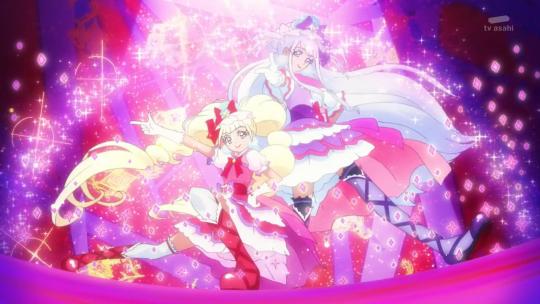
Hugtto! Precure started with an incredible opening arc, then never let off the gas pedal. Nearly every episode of Hugtto is a stand-out, never-before-seen, innovative tour-de-force. The combination of production miracles that resulted in Hugtto has been talked about by me on this blog before, (http://vanilla-blessing.tumblr.com/post/176000267859/hana-is-getting-unstable-a-pink-precure) but the length of time that Hugtto stayed in the paint, going extremely hard every single week with few exceptions, was just absurd. Every season of Precure has one or two peaks, sometimes a good season gets lucky and has even more, the best seasons bat a solid average, but are still expected to be held back by reality. Coming out of the fifteenth season of Precure with a majority of the best episodes in the entire franchise isn’t something that I can wrap my head around, but it definitely happened, mostly in 2018. It’s simultaneously a love letter to the franchise’s past, present, and future made by the biggest Precure fans on the planet, and it’s unquestionably the best season. Hugtto threw what we all knew was true and had accepted about Precure clear out the window, retroactively made older seasons better, watered my crops, brought world peace, ect.
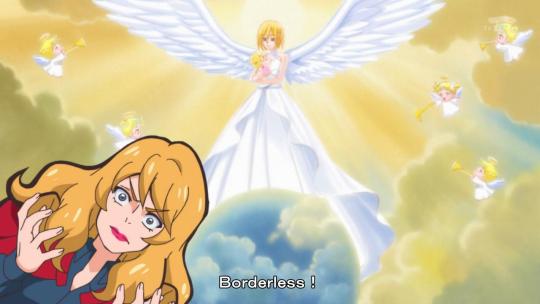
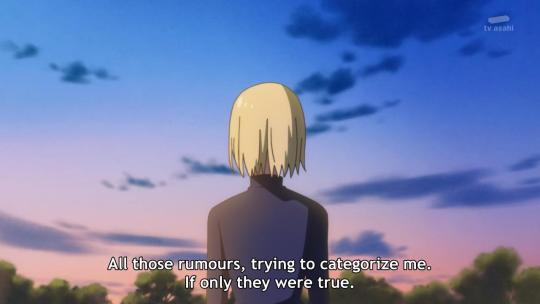
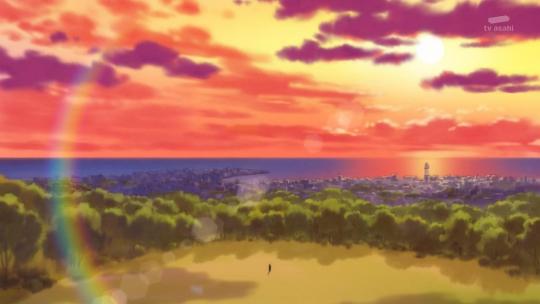
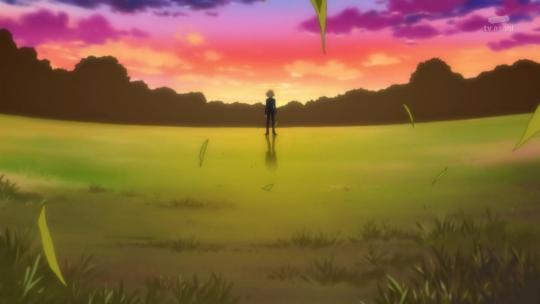
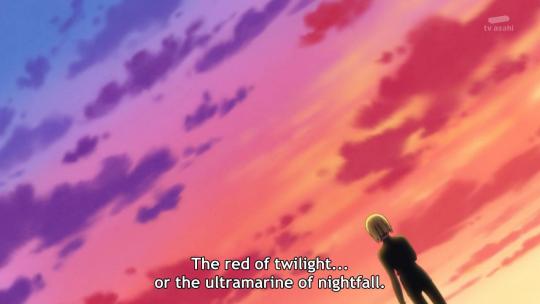
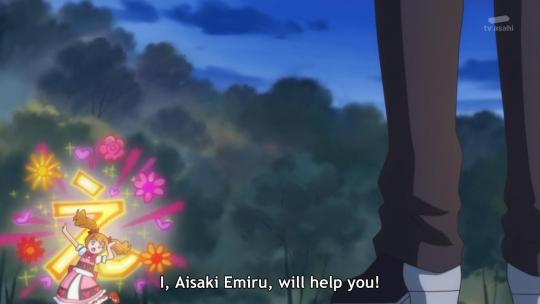
Oh yeah and boys can be cures now.
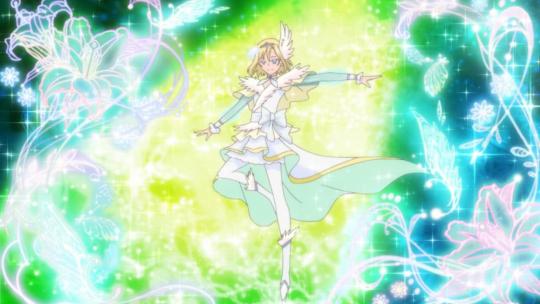
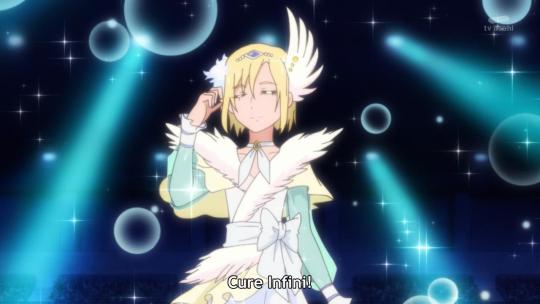
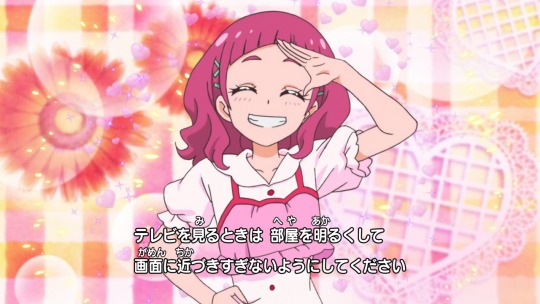
#2
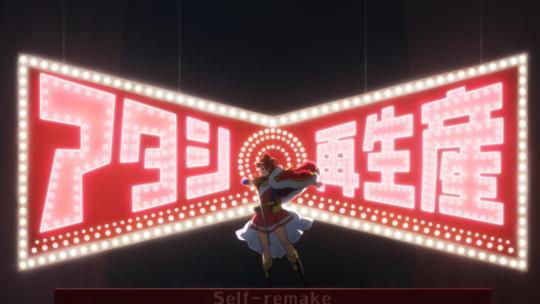
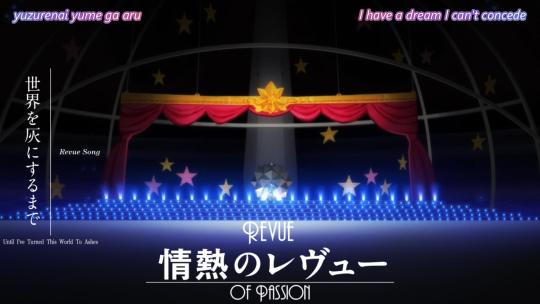
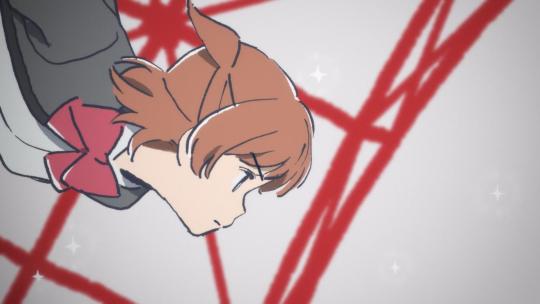

I’m definitely not done with Revue Starlight and this won’t be the last time I talk about it. Revue Starlight essentially carried the Summer 2018 anime season on its back. Starlight absolutely dominated my anime watching schedule; my week was seriously just waiting for and watching different translations and releases with every other show being almost incidental, far less important than waiting for the song lyrics to get translated for an episode I had seen three times already. I won’t get into everything here, since I’ve already talked about it on this blog after all (http://vanilla-blessing.tumblr.com/post/179023723689/subtext-is-for-cowards-revue-starlight), but I need to reiterate that it was such a commanding, unique, stylized experience and didn’t drop a single episode in its entire absurdly high-level production. The only reasonable explanation for this is devil magic, and hell, it was worth it. Revue Starlight is probably in my top 5 anime of all time and I wouldn’t get this list out if I said everything I wanted to say about it. It’s great. Watch it twenty times.
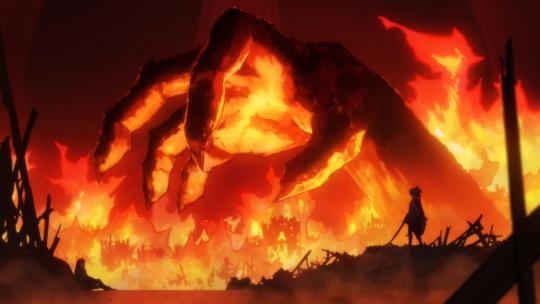
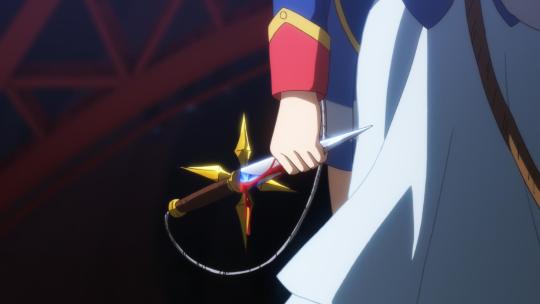
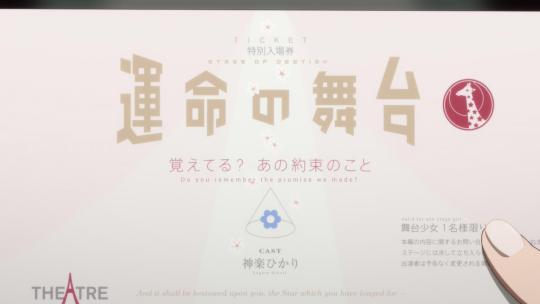
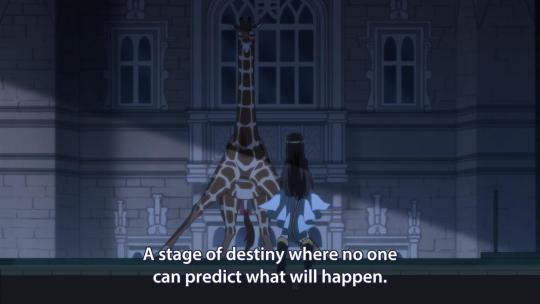
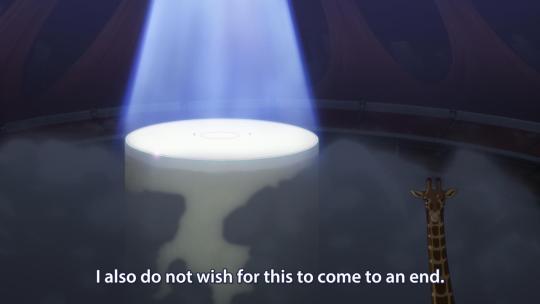

#3

Pop Teen Epic, or Hoshiiro Girldrop, was the most wildcard that has ever been in seasonal anime, and could have been absolutely anything. What none of us predicted was just how much of anything this show would be, encompassing an unprecedented range of artists, voice acting talent, and whatever AC-bu are, each giving their very individual takes on a self-described shitpost comic strip, sometimes covering the exact same material two or three times, with no regard for any sort of cohesion or structure.

Nothing about this idea should have been funded, nothing in Pop Team Epic has any reason to work, and as a straight adaptation probably wouldn’t have worked. PTE spun gold from trash through the raw effort of artists doing their own thing, which captures the original spirit that made the formerly-cancelled comic popular in a way that’s much too intelligent for haters to understand. Also it got a dub, which is the most ridiculously bad idea i’ve heard in my life, and it owns that it happened.
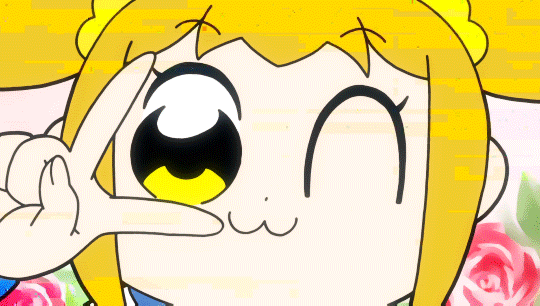
#4
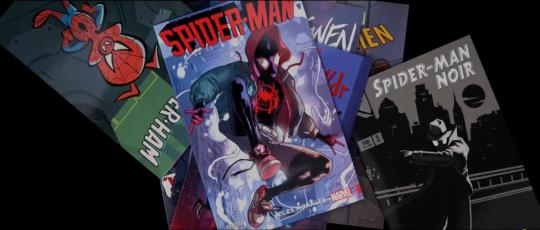
Spider-man into the Spider-verse is legit the best comic book movie ever made. It’s a fun, expressive twist on the most tired superhero origin story of all time, and showcases some of the most sssssssssstyle and raw, real emotion I’ve ever seen in animation. Its particular selection of influences is brilliant and poignant, rising far above the simple fanservice you’ve come to expect from Spider-man. The unrelenting individualistic spirit of this movie will stick with you the longest in the soundtrack, bravely incorporating a side of pop music that you don’t usually get to see in big-budget productions, pulling soundcloud rappers out of their grody (i’m told) dens into the spotlight with equal importance alongside the heroic score. Spider-verse is all about establishing your own unique flavor, and it manages to overwrite every other entry in this cursed franchise with its bold taste.
youtube
youtube
#5
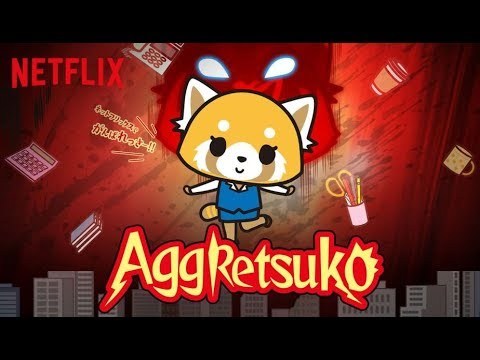
It doesn’t make sense to me how amazing Aggretsuko’s dub is. The impeccable timing of each line, the perfect integration with the comedy, and the optimal length of the episodes are all far beyond what I expected from a Netflix show. It not only converted the original series of shorts that I already had on my top 10 the first year into a godlike longer series I didn’t know I wanted, but went to the effort to bring real metal singers in for the karaoke. Honestly just repeat everything I said in my 2016 list and multiply it by five. I hope they make more. They’re making more.
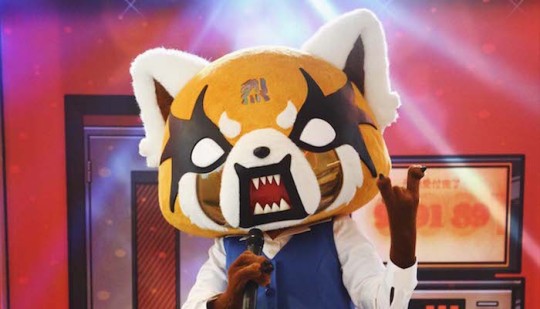
#6
youtube
I was pretty slow to pick up anime in the Winter 2018 season, but I never missed Hakumei and Mikochi, maybe because it was like, the only simulcast on my favorite online anime streaming subscription service HiDiVE. The subs weren’t great, and it certainly wasn’t all that popular, but it was just the relaxing show I needed. Hakumei and Mikochi brought me back to my favorite non-racist parts of the Redwall series of books: friendly animals, delicious foods, alcohol, and rustic songs. I was ready to put it on my list for simply being a cute healing foodie anime, but to my surprise, it had much more in store within its tiny world: stark confrontations with mortality, a shy riverside necromancer, the inexplicable remake of The Raid: Redemption in miniature, fashion trends, frogs, carpenter weasels, carpenter skeletons, ghost celebrations, a country beetle with lofty dreams. The list of memorable people, places, and things contained in the gnomish roommates’ tiny world goes on and on.
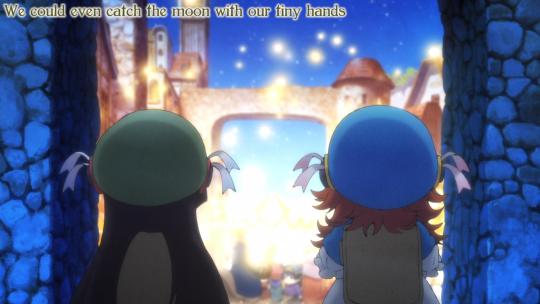
Masaomi Ando’s directing went completely along with the storybook aesthetic, maybe even to an overall detriment, which is exactly the kind of reckless commitment to style I love to see. The distinctive paneling, constantly gorgeous backgrounds, and deliberate pacing perfectly captured the imaginative stories I loved to read as a kid, but with more alcohol, and more sophisticated themes under the surface. Even something anime rarely get right, endings, were perfectly capstoned every week with a short digest that explored more of the history, legends, and very personal lore of their small, unique world. At its core, Hakumei and Mikochi is the calming story of tiny roommates you think it is, but it’s also so much more. They have day jobs and get drunk and remodel their house after it explodes that one time. They gamble dangerously to escape a blizzard, help a photographer give herself a little credit, and rescue their neighbor from a fancy grave of her own making. By the end of the show Hakumei practically built half a town. The collective stories from their everyday adventures build into something tremendous, and it all wraps up on the most perfect ending sequence I could have hoped for, which calls back to every story thus far as a new verse of the show’s central duet is sung. In any reasonable AnimeOTY Hakumei and Mikochi would be my top anime of 2018, but this year, the competition was unreasonable. This show will just have to settle for being the best regular anime of the year.
youtube
#7
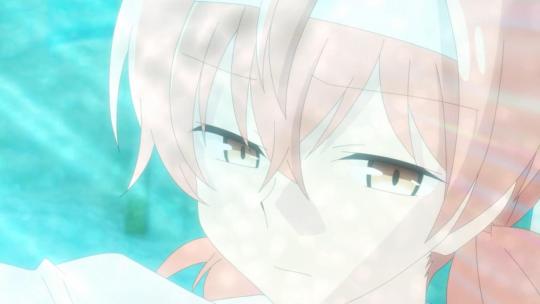
Bloom Into You is an incredible adaptation of an apparently yuri romance manga that raises the bar for anime adaptations in general. I don’t know when, but somewhere along the line I stopped expecting that serious capital R Romance anime would have a distinctive style, and gave up to the notion that there was no demand anymore and a stylized, seinen/josei romance would just never get made. Well that was 2016 and then Scum’s Wish happened which this blog has covered extensively.(http://vanilla-blessing.tumblr.com/post/168842023559/how-lerche-adapted-an-average-trashy-romcom-into, http://vanilla-blessing.tumblr.com/post/168789506264/scums-wish-and-our-messy-uncomfortable) To me Bloom Into You feels similar in concept, as a difficult romantic situation with no easy answers or completely happy people. The main perspective character, Yuu, is among my favorite romantic leads in any series; she doesn’t get romantic feelings, although she wants to, and despite being easily motivated, is kind of dispassionate. Her relationship that she was pushed into with Touko might as well be out of mutual convenience, since Touko doesn’t want to fall in love with someone who would love her back, and Yuu doesn’t think she can.
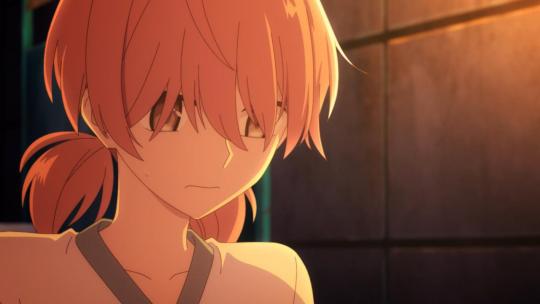
Yuu filters the developments of the series as they grow closer through a very different perspective compared to more emotional leads of usual romance stories, methodically breaking down and considering where she’s at, observing where others are at, before taking an action that makes sense to her. Her growth through the series takes a very different direction than the common dramatic formula; instead of running headfirst into misunderstandings to overcome romantic challenges, she’s compelled to take a step back and position herself in a way that allows her to understand and confront her girlfriend’s issues. The changes that she experiences herself during this process are extremely gradual, but are no less significant to her. Although the dramatic weight of the series is obviously all about Touko, the central thesis of Bloom Into You is to explore Yuu’s complex feelings, and ask to what degree our actions are dictated by our emotions. It’s a heavy topic to be sure, but what makes this anime adaptation special in particular is how the directing and production pull it off, to maybe an even stronger degree than the original material.
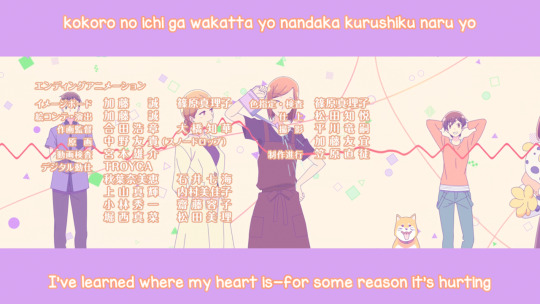
Bloom Into You’s most striking and noticeable feature is the incredible conservation of small movements that connect expressions naturally. Minute changes in characters’ faces are vital to observe the almost imperceptible changes in Yuu over the course of the series, and every aspect of the direction is in service of highlighting these subtle moments. In addition, repeated cinematic themes are reinforced over the show’s run, such as the use of light to impart a blinding realization, flower language to inform deeper personalities, even using a literal (not literal) cinema. Symbols such as trains, masks, and mirrors are used constantly and consistently to reinforce the show’s themes, which should be immediately obvious from the opening animation. I’m still kind of stunned that Bloom Into You’s ending theme is such a banger and managed to use an oscillating sine curve in a metaphorical way. These details might be lost without the brilliant layouts, intentionally resembling a stage, which always push the minute differences front and center. As an anime adaptation, Bloom Into You adds so much value in such a subdued, conservative way that it puts uninspired adaptations to shame.
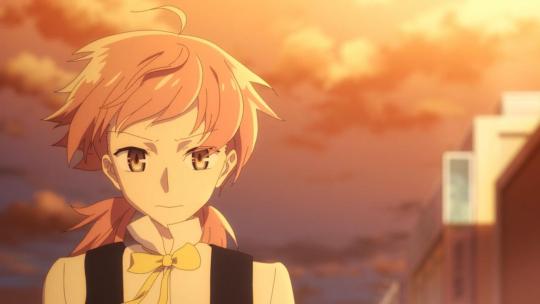
#8
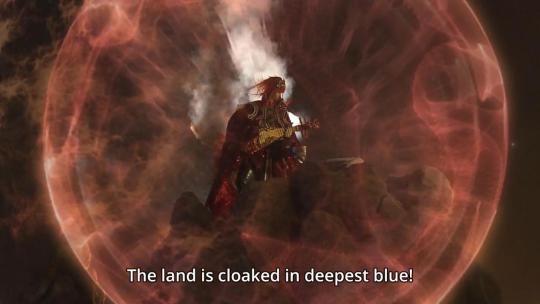
Thunderbolt Fantasy 2 rounded out the year with a good old new-fashioned Japanese-speaking Chinese-Wuxia Taiwanese puppet show. The novelty of this wild series, like, existing at all, is still incredible to me, but I was really wowed by the new characters and the direction the series went in after the already high standards of the first season. Following the outrageous action and fights of the previous season, I did not expect that season 2’s introductory goon would 1. Live past the first episode 2. So quickly become my favorite swordfighter and 3. Have inarguably the most complete character arc of the entire show thus far. The Princess of Cruelty’s struggle against her inner and outer demons in a unreasonably stacked, desperate situation developed her into easily the most compelling character of the season, and the rest of the cast including a corrupt police officer with extremely disconcerting and bad puppet teeth, a ventriloquist rock-lutist, and a nihilist monk each bring their own unique flavors to the table. The table that they throw the puppets in the air from to make the show. All of the new elements of Thunderbolt Fantasy 2 improved an already strong formula even more, and revealed an emotional depth to the series that I’m excited to see developed further. Some people might not call this anime, but those people haven’t seen Thunderbolt Fantasy for longer than 2 seconds. It’s so anime.
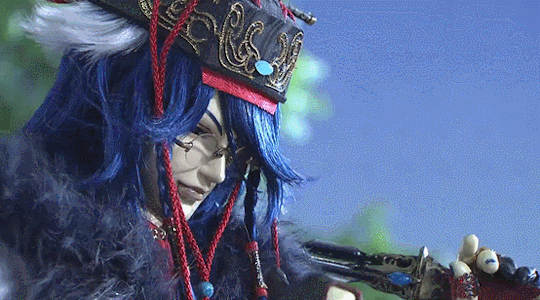
#9
I blasted all available seasons of Star vs the Forces of Evil early in 2018, and it was basically my first foray into straight-up American cartoon magical girl, despite watching all the Japanese ones, which was probably an oversight on my part. That’s because Star Versus is really good, and provided a flavor of magical girl I had been missing out on. I could talk about the excellent sparkle witch aesthetic of the show, fluid animation, and hilarious comedy, but I’d rather spend this blogspace posting Star Butterfly faces.
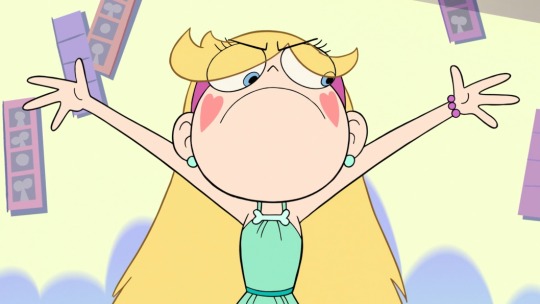
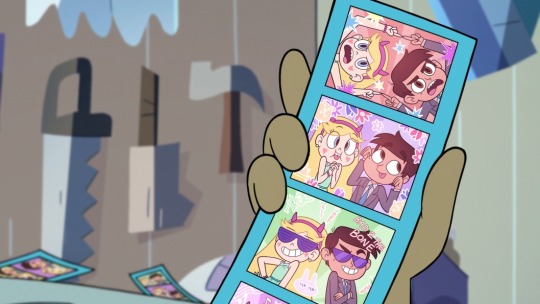
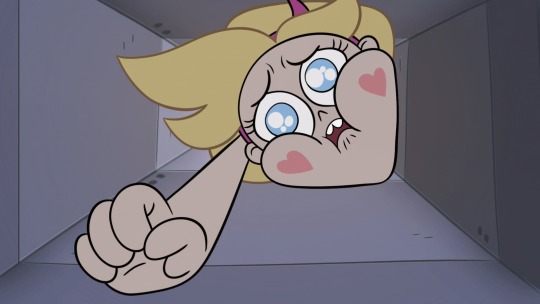
#10
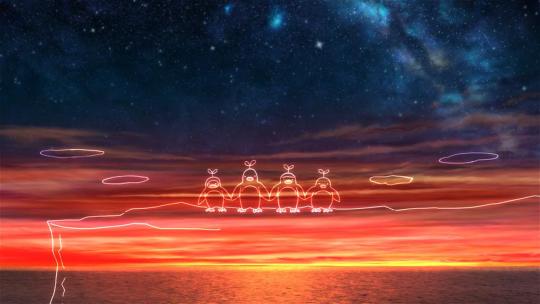
A Place Further Than the Universe, or YoriMoi, or my preferred moniker That Antartica Anime, wasn’t on my radar until well after it had finished airing, but it stuck with me for most of the year. Although it’s definitely melodramatic at times, it utilizes this tendency in exactly the right way to enhance the individual characters’ emotional arcs. Even though I was personally sort of taken out of it for many of the girls’ personal trials, :penguin emoji: is obviously thoughtfully written and carefully constructed, and especially knows how to orchestrate an immense emotional reaction with pitch-perfect timing. If there’s one particular aspect this anime has absolute mastery over, it’s hitting that perfect note and cue to create a memorable narrative climax. And for all my bellyaching about not fully relating to some of the characters, Miyake is definitively the #1 qb-relatable character of the year.
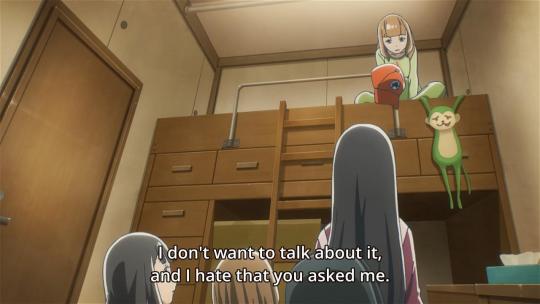
Here’s the rest of my list. Don’t @ me about it because if its not on my top ten then it doesnt really count anymore i dont make the rules thats just how it is
11. Yuru Camp
12. Hisone and Masotan
13. Asagao to Kase-san
14. Devilman Crybaby
15. After the Rain
16. Planet With
- friend of the show @queuebae on twitter
That’s why the 2018 anime of the year award goes to Kaiju Girls 2.
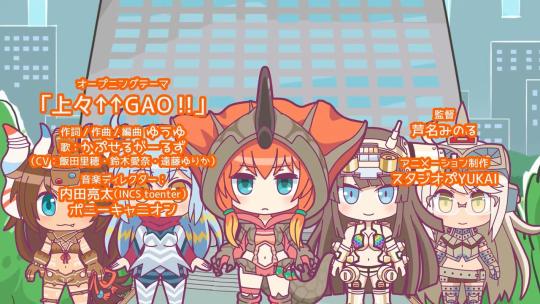
#top ten anime 2018#top ten pop team epics#pop teen epic#pop team epic#hoshiiro girldrop#poppiteppikiu#popttippiku#bob team epic#bob epic team#PTE 2018#Pop Team Epic Season 2
10 notes
·
View notes